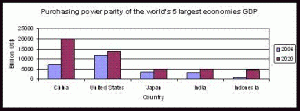Multilevel marketing companies have worked hard to adapt their business practices to meet the Chinese market demands.
The Retail/ Single Level Switch
The conversion from MLM to retail required a serious shift in MLM thinking and practice. At the time of the ban, Amway had already invested more than US$100m, Avon US$70m and Mary Kay another US$20m (“When the Force is Against You,” 1998, p. 5). This ban put hundreds of millions of dollars worth of equipment and liabilities at risk. The jump to retail sales was meant to protect investments and also to diversify revenue stream. Some of the specific changes in the Chinese-MLM strategies are listed below (“When the Force is Against You,” 1998, p. 5):
• Avon. Distribution branches were converted into retail and wholesale stores. Kiosks were opened in partnered-national retail chains and sales promoters and customers were allowed special customer discounts. Avon has more outlets than any other nutraceutical MLM company in China with 6,300 beauty boutiques and 1,700 beauty counters (“Still Off the Doorstep,” 2005, p. 2).
• Amway. Product distribution centers were converted into retail stores. Small fees allowed up to 15% special customer discounts on all purchases. Sales promoters can do product demonstration and customer follow-up. Sales promoters deliver items to customers homes and receive payment on commission. Amway has around 130,000 sales representatives selling some 180 products. It also operates more than 130 retail stores (“Still Off the Doorstep,” 2005, p. 2).
• Mary Kay. Practices will change very little. Whereas Mary Kay sales transactions were mostly done in their “beauty centers” before the ban, their new policy required all sales transactions take place in their specified sales locations and sales promoters work on a commission-only pay. Mary Kay continues to hold beauty education classes to promote their products (Hulme, 2001, p. 43).
• Nu Skin. Arriving late into the market in 2003, Nu Skin has since invested more than US$100 and is operating approximately 115 outlets. Nu Skin has announced their plans to increase the number of its retail outlets to 200 by the year 2006 (“Still Off the Doorstep,” 2005, p. 3).
Effect on Revenues
Transition of business models was not a smooth ride for the big MLM firms. Months of no sales revenues, extensive employee retraining and internal restructuring took a toll on the recovering giants. As a result of the ban, the big companies’ yearly sales were cut nearly in half for the first year (“When the Force is Against You,” 1998 p.5). Since then, however, revenues have seen strong growth for many companies. In 2002, revenues from China’s total sales volume brought Amway RMB$6b, approximately US$750m. In August of 2005, Amway reported to have already met $2b. These revenues accounted for nearly one fourth of Amway’s total global sales (Li, 2005 par.11; “World Consumer,” 2003). Other companies such as Mary Kay and Avon also reported very strong growth (Hulme, 2001 p.43; Ui-Hoon, 2001 par.3). Mary Kay’s 2002 sales numbers exceeded US$120m), Avon’s exceeded US$220m. Such phenomenal growth is what initially attracted other global companies such as Nu Skin Enterprises to try for a share of the industry. Nu Skin Enterprises obtained over US$100m in sales for 2004 (“Still Off the Doorstep,” 2005, p.3).
Adapting to Chinese Business
Making the jump to retail sales is only one of the big steps that MLM companies are doing to adapt to business in China. The learning curve associated with pioneering a business in China requires time, resources and an extensive amount of learning. When commenting about doing business in China, Blackman wrote,
People are unable to start doing business in China as if they were in the developed West. A business [firm] must learn how the local scene works and then decide to what extent he or she will adapt to local ways (Blackman, 2000, pp.14-15).
Making Connections.
Using guanxi to effectively maneuver within Chinese business has quickly become a top priority among many of the leading MLM companies. By establishing strategic relationships with the government and other companies that operate in China, MLM companies open doors to many opportunities, both transparent and inconspicuous. In August of 2003, a recent program brought over 60 top Chinese mayors and officials to Utah and Boston for a leadership training seminar (“Chinese Government Officials Visit Utah to Study American System,” 2003, par.1) Shawn Hu, a major organizer of this project, stated that this program was largely sponsored by MLM companies in China (personal communication, November 16, 2003).
Avon, the fastest company to recover from the ban of 1998, used special relationships to gain acceptance from the Chinese government when faced with a problem in establishing their manufacturing operations. After initially failing to convince the central government of its direct marketing program, Avon acquired the assistance of David Li, the head of the Hong Kong’s Bank of East Asia. Li used his cordial guanxi with the Chinese government to successfully introduce Avon to the appropriate industry in southern China (Luo, 2001, p. 56).
